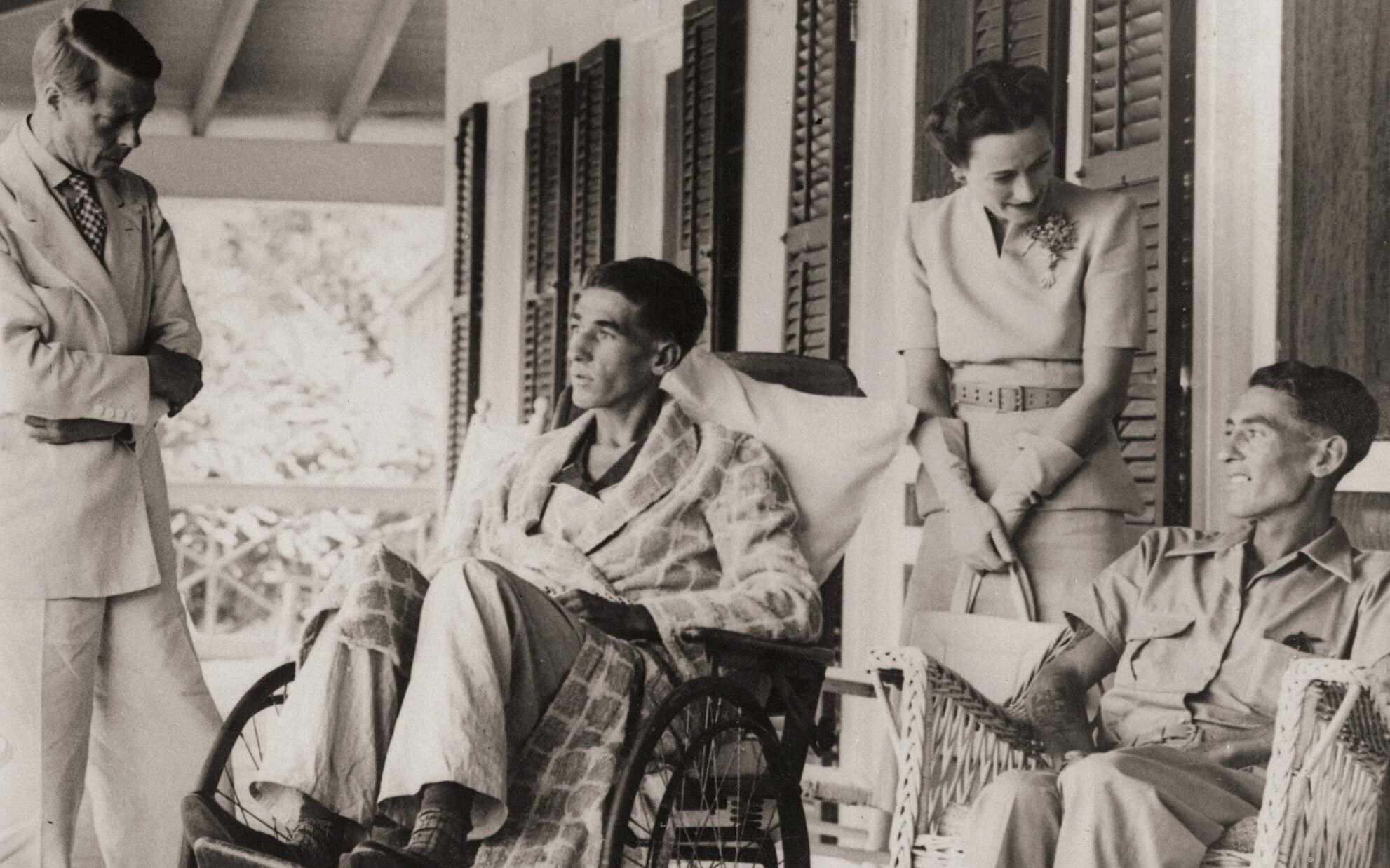
What are the Marburg Files? Imagine stumbling upon a treasure trove of secrets buried in the chaos of World War II. That's exactly what happened in May 1945 when American troops discovered the Marburg Files in Germany. These documents, also known as the Windsor Files, contained over 400 tons of Nazi archives, including shocking correspondence between the Duke of Windsor and high-ranking Nazi officials. The files revealed a sinister plot, Operation Willi, aimed at kidnapping the Duke and Duchess of Windsor to negotiate peace and possibly reinstall the Duke as king. Despite attempts to suppress them, these files eventually surfaced, offering a unique glimpse into the dark alliances and rivalries of the era.
Key Takeaways:
- The Marburg Files, discovered by American troops in 1945, revealed a shocking Nazi plot involving the Duke of Windsor and his potential reinstatement as king, shedding light on World War II's diplomatic intrigue.
- The Marburg Files, featured in "The Crown," provide a unique insight into the complex relationships between European monarchies and fascist regimes during World War II, sparking public interest and controversy.
The Discovery of the Marburg Files
In May 1945, American troops stumbled upon a treasure trove of documents that would later be known as the Marburg Files. These files, hidden away in Germany, revealed shocking secrets about the Nazi regime and its connections to British royalty.
-
Discovery: American troops found the Marburg Files near the Harz Mountains and compiled them at Marburg Castle in Hesse.
-
Initial Discovery: First Lieutenant David Silberberg discovered documents signed by Nazi Foreign Minister Joachim von Ribbentrop while traveling through the outskirts of Degenershausen Estate.
-
Significance: These documents contained correspondence between the Duke of Windsor and high-ranking Nazi officials, revealing a plot to persuade the Duke to join the Nazis and potentially reinstate him as king.
Operation Willi: The Nazi Plot
One of the most startling revelations from the Marburg Files was Operation Willi, a Nazi plan involving the Duke of Windsor.
-
Operation Willi: This plot aimed to kidnap the Duke and Duchess of Windsor and use them to negotiate peace between Britain and Germany.
-
Kidnapping Plan: The plan involved convincing the Duke that his brother, King George VI, and Prime Minister Winston Churchill planned to assassinate him upon his arrival in The Bahamas, where he had been named governor.
-
Reinstatement Plan: The Nazis proposed reinstating the Duke as king and recognizing his wife, Wallis Simpson, as queen in exchange for Nazi forces being given free movement across Europe.
The Duke's Sympathies and British Government's Response
The Marburg Files also hinted at the Duke of Windsor's sympathies and the British government's efforts to suppress these revelations.
-
Duke's Sympathies: While there is no evidence that the Duke accepted any terms offered by the Nazis, some documents suggest he sympathized with Nazi ideologies.
-
Suppression: The British government, under Prime Minister Winston Churchill, sought to suppress the release of the documents, fearing they would damage the reputation of the British royal family.
-
Release: Despite initial suppression, a small batch of documents was released in 1954, and the entire collection was eventually forced into publication in 1957 at the Public Record Office in Kew.
The Role of American and British Troops
Both American and British troops played crucial roles in the discovery and examination of the Marburg Files.
-
American Involvement: American troops, including First Lieutenant David Silberberg, played a crucial role in discovering and collecting the documents, which were then transported to Marburg Castle for review.
-
British Involvement: British intelligence officers, including Lieutenant Colonel R. C. Thomson, were also involved in the discovery and examination of the documents.
Public Reaction and Historical Significance
The release of the Marburg Files caused a stir, revealing much about World War II's diplomatic intrigue.
-
Public Reaction: The release of the files caused significant public interest and controversy, with the Duke of Windsor denouncing their claims as "complete fabrications".
-
Historical Significance: The Marburg Files provide a unique insight into the complex web of alliances and rivalries during World War II, particularly between the Nazi regime and the British royal family.
The Marburg Files in Popular Culture
The Marburg Files have even made their way into popular culture, notably in the Netflix series "The Crown."
-
Netflix’s The Crown: The Marburg Files were featured in episode six of season two of Netflix’s The Crown, titled “Vergangenheit,” which depicts Queen Elizabeth II’s initial review of the documents.
-
Episode Details: The episode shows soldiers of the 9th Infantry Division discovering the documents, which were part of a large collection known as the Marburg Files.
-
Historical Accuracy: The episode is well-researched and based on true events, with historians confirming the involvement of the 9th Infantry Division in the discovery of the documents.
The Aftermath and Legacy
The Marburg Files have left a lasting impact on our understanding of World War II and the relationships between European monarchies and fascist regimes.
-
David Silberberg’s Role: First Lieutenant David Silberberg, a member of the 47th Infantry Regiment, 9th Infantry Division, was instrumental in discovering the documents and recognizing their significance.
-
Schloss Marburg: The documents were initially discovered outside of Marburg but were later transported to Schloss Marburg for further examination.
-
Windsor File: The correspondence between the Duke of Windsor and Nazi officials became known as the Windsor File, which was a central part of the Marburg Files.
-
Operation Willi’s Details: The plan involved kidnapping the Duke and Duchess while they were leaving Europe to travel to Bermuda, where he had been named governor.
-
Telegrams Revealed: The telegrams revealed in the Marburg files claimed that the Duke and Duchess were clued in on the Nazis’ plan to reinstate the Duke as king and that the Duchess was a fan of the idea.
-
British Government’s Response: The British Prime Minister at the time, Winston Churchill, wanted to destroy all traces of the Nazi telegrams and their plans to reinstate Edward as king, fearing they would send a misleading message about the Duke’s loyalty.
-
Eisenhower’s Role: U.S. President Dwight D. Eisenhower accepted Churchill’s request to suppress the Windsor section of the Marburg files for at least 10 or 20 years.
-
U.S. Intelligence’s View: U.S. intelligence believed that the Windsor File was not a flattering depiction of the Duke and that the correspondence between him and the Nazis was "obviously concocted with some idea of promoting German propaganda and weakening western resistance".
-
Duke’s Denial: When the telegrams were eventually made public in 1957, the Duke denounced their claims and called the files’ contents "complete fabrications".
-
Historical Impact: The Marburg Files have significantly impacted historical understanding of World War II, particularly regarding the complex relationships between European monarchies and fascist regimes.
-
Archival Significance: The documents are now housed at the Public Record Office in Kew, providing a valuable resource for historians studying World War II and its diplomatic intrigue.
-
Popular Culture: The Marburg Files have been featured in popular culture, including in the Netflix series The Crown, which depicts Queen Elizabeth II’s initial review of the documents.
-
Historical Accuracy in The Crown: The episode “Vergangenheit” from The Crown is well-researched and based on true events, with replicas of genuine files used during filming.
-
Historian’s Perspective: Historian Hugo Vickers has suggested that the episode falsely implies that the Duke was banished from the royal family upon release of the Marburg Files; he remained in contact with his family and continued public appearances.
-
Operation Willi’s Failure: The plan to kidnap the Duke and Duchess ultimately failed, as there is no evidence that they accepted any terms offered by the Nazis.
-
Nazi Propaganda: The Nazis believed the Duke to be a more ambivalent ally than his brother King George VI, which led to their attempts to lure him over to their side.
-
Duke’s Sympathies with Nazis: While there is no conclusive evidence that the Duke accepted Nazi ideologies, some documents suggest he sympathized with them, which further complicated his relationship with his brother and the British government.
-
Historical Legacy: The Marburg Files serve as a testament to the complex web of alliances and rivalries during World War II, providing a unique insight into the inner workings of both Nazi Germany and the British royal family.
-
Conclusion: The Marburg Files are a significant historical discovery that has shed light on the intricate relationships between European monarchies and fascist regimes during World War II. The documents, which include correspondence between the Duke of Windsor and high-ranking Nazi officials, reveal a plot to persuade the Duke to join the Nazis and potentially reinstate him as king. The historical significance of these files extends beyond their immediate context, providing a valuable resource for historians studying the diplomatic intrigue of World War II.
The Legacy of the Marburg Files
The Marburg Files have left an indelible mark on our understanding of World War II and the intricate relationships between European monarchies and fascist regimes. Discovered by American troops in 1945, these documents revealed startling connections between the Duke of Windsor and high-ranking Nazi officials. The files exposed Operation Willi, a plot to kidnap the Duke and Duchess of Windsor, aiming to use them as pawns in Nazi negotiations. Despite attempts to suppress the documents, their eventual release in 1957 sparked public interest and controversy. The files, now housed at the Public Record Office in Kew, continue to be a valuable resource for historians. They provide a unique glimpse into the diplomatic intrigue of the era, highlighting the complex web of alliances and rivalries that defined the war. The Marburg Files remain a testament to the enduring impact of historical discoveries.
Frequently Asked Questions
Was this page helpful?
Our commitment to delivering trustworthy and engaging content is at the heart of what we do. Each fact on our site is contributed by real users like you, bringing a wealth of diverse insights and information. To ensure the highest standards of accuracy and reliability, our dedicated editors meticulously review each submission. This process guarantees that the facts we share are not only fascinating but also credible. Trust in our commitment to quality and authenticity as you explore and learn with us.


